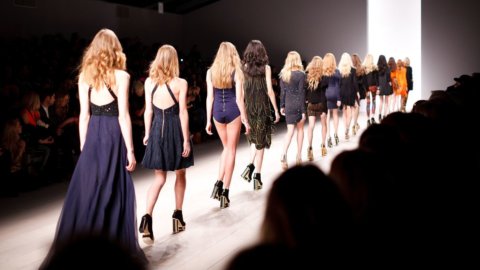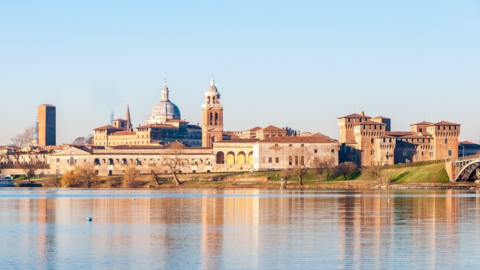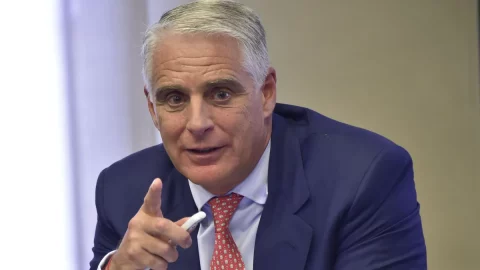Luxury, an industry that is worth 250 billion globally and which has continued to grow for twenty years, supported above all by Asian demand and which has hardly been affected by the recession. But how is the market evolving and how is Italy positioned? This was the question asked by Deutsche Bank, which through the studies of Global Luxury Research presented to the Milan Stock Exchange, together with Pambianco, a research on the future of Italian fashion.
The two main drivers of global luxury are the digitization and tourism, another sector that is closely linked and which offers Italy, which with its 88 billion in turnover is the third largest market by destination, a great opportunity. "The idea must be that of a luxury Eataly", argued Francesca Di Pasquantonio, Head of Global Luxury Research of Deutsche Bank, in urging Italian brands to create a greater system to be even more present abroad, along the lines of what Eataly has done in the food sector and confirmed by the executive president Andrea Guerra: "With Eataly, 8.000 Italian food products have crossed the national border for the first time".
Digital revolution
The first big news is digital, which is changing the world of fashion as it allows direct contact between brands and consumers and allows more and more Millennials (21-37 years), a generation historically less inclined to spend than the baby boomers , to be protagonists again on this market. “The return of the young and European consumer – explains Di Pasquantonio – is mainly due to pricing and commercial reasons. The luxury groups, after riding the Asian boom, are calming prices”. And then there's the internet and social media that launch fashions and create new purchase motivations, even among young people and even on mature markets.
In the world there are 3,4 billion connected smartphones and 90% of fashion brands, according to what emerges from a research by Pambianco, have a profile on the main social networks, in particular Instagram which, also according to the stylist Giuseppe Zanotti, present at the event on the stock exchange, "it is the new frontier of the luxury market: it is from there that we get the greatest ideas". Pambianco has also demonstrated that by now, looking only at Italian companies (the research is conducted on a group of companies that represent a total turnover of 8 billion), investment in communication reaches 5% of turnover and social campaigns have gone from 0% in 2012 to 12% in 2016, with a total of 23% dedicated to social media or online advertising.
The resource of tourism
For high-end brands, according to research by Premier Tax Free, sales from tax-free shopping, therefore those related to tourism and airports, are confirmed as the main source of revenue. And in Europe, the data show that non-EU tourists in the first ten months of 2017, after the slowdown in 2016, increased by 11%, with an increase in the average receipt of 3%. Italy remains among the three favorite destinations together with France and the UK, while tourists mostly arrive from China, India, the USA, but also Russia and Brazil.
In particular in Italy most of the tax free shopping, with 28% (USA and Russia behind with 11%), comes from Chinese visitors. Therefore, even if Europeans return to spend and Millennials represent a quarter of demand (but not of spending), according to the analysis by Deutsche Bank "the Chinese consumer remains the fulcrum of growth: today they represent more than a third of overall demand and will even 40%”. Confirming the importance of tourism, it appears that the globetrotter is the engine of demand, especially among Chinese customers: "Chinese consumers spend more than 60% outside their country and travel retail now accounts for 10% of turnover corporate, scratched only marginally by e-commerce”. In short, people still prefer to travel and spend while traveling.
Italian market
Italian industry has 67 companies (equal to 17% of the manufacturing total), employs almost 600 people (16% of the manufacturing workforce) and produces a total turnover of 88 billion euros, of which 62% goes to exports, contributing to half of the Italian trade surplus. So far in 2017, according to Eurostat data, exports have grown by 4%.
How to take advantage of this growth, and of Italy's tourist appeal? “First of all – argues Di Pasquantonio of Deutsche Bank – using online more aggressively. The digital channel now represents 9% of demand and makes it possible to collect new information thanks to technologies and customer profiling. Then it takes the courage to steal talent from other sectors: Apple, for example, has hired the CEO of Burberry as head of retail, and vice versa, LVMH has a manager borrowed from Apple. And then we need to create a system: conglomerates have proven to generate better economic and financial performance”.
We need a national brand, a made in Italy that brings together the great potential: Italy boasts the largest number of brands in the top 100 of the luxury sector compiled by Deloitte and the "made in Italy" brand is the third most searched in the world according to Google . The great provocation is that of an Eataly model also for luxury: “In Italy there are resources, ideas and talents that are not yet valued at the system level. We need a Lux-taly on the model of Eataly for food, a conglomerate that enhances the Italian brands on a global scale that cannot do it individually, which are the majority”, concludes the Deutsche Bank analyst.





